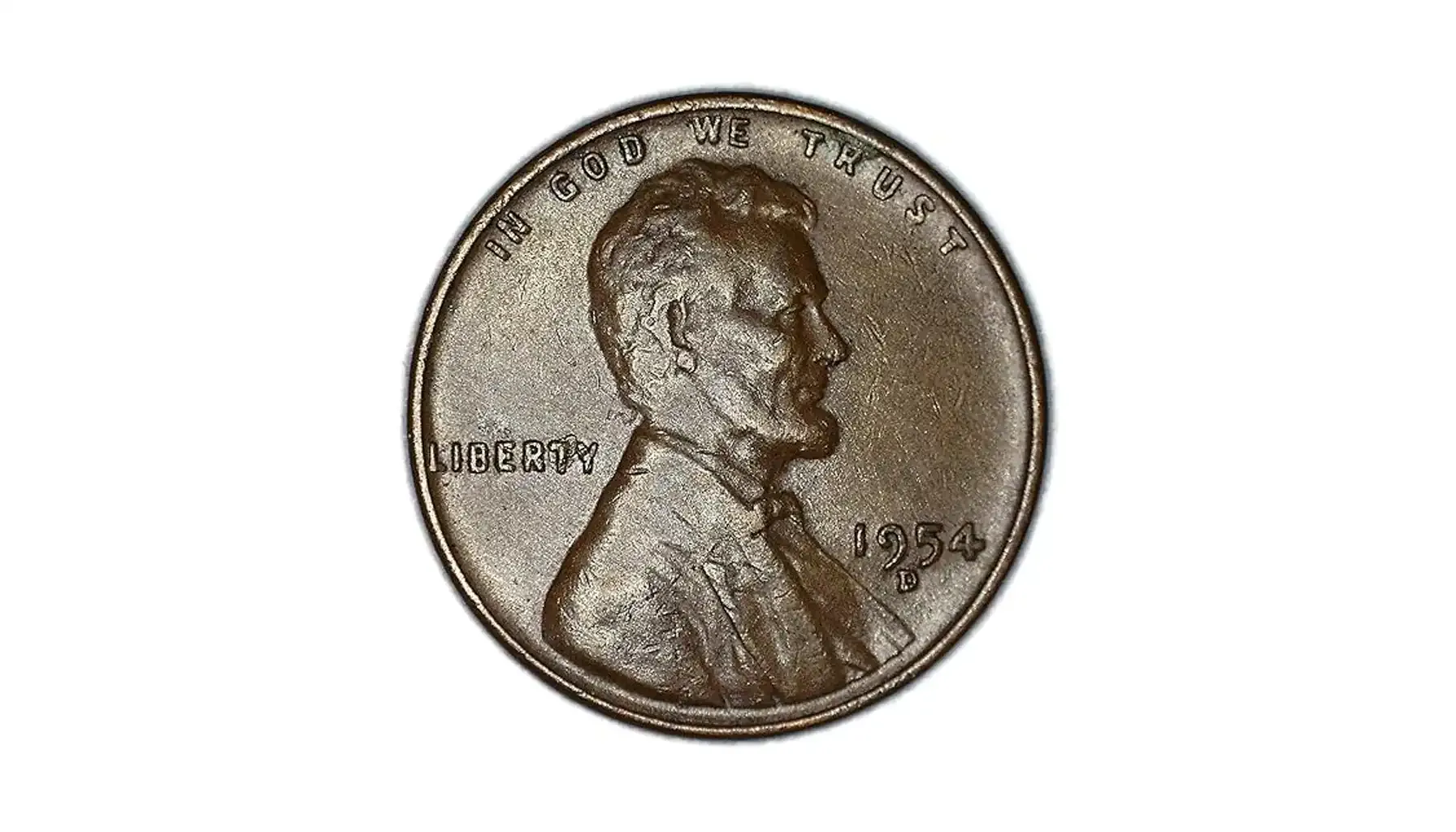Contents:
A wheat penny may be proudly titled one of the most iconic yet rather scattered units of currency in the United States. Even though the series was released more than a century ago, its influence on the modern numismatic market can be sensed even these days. The past does not fade, but its legacy lingers.
Between the two world wars, when nations were recovering from the devastating aftermath of global conflicts and tackling the uncertainties that lay ahead, even small coins served as silent symbols of hope and change. The hero of today’s material is a 1936 Lincoln penny. Let us review its main characteristics and check coin value by mints, grades, and market demand.
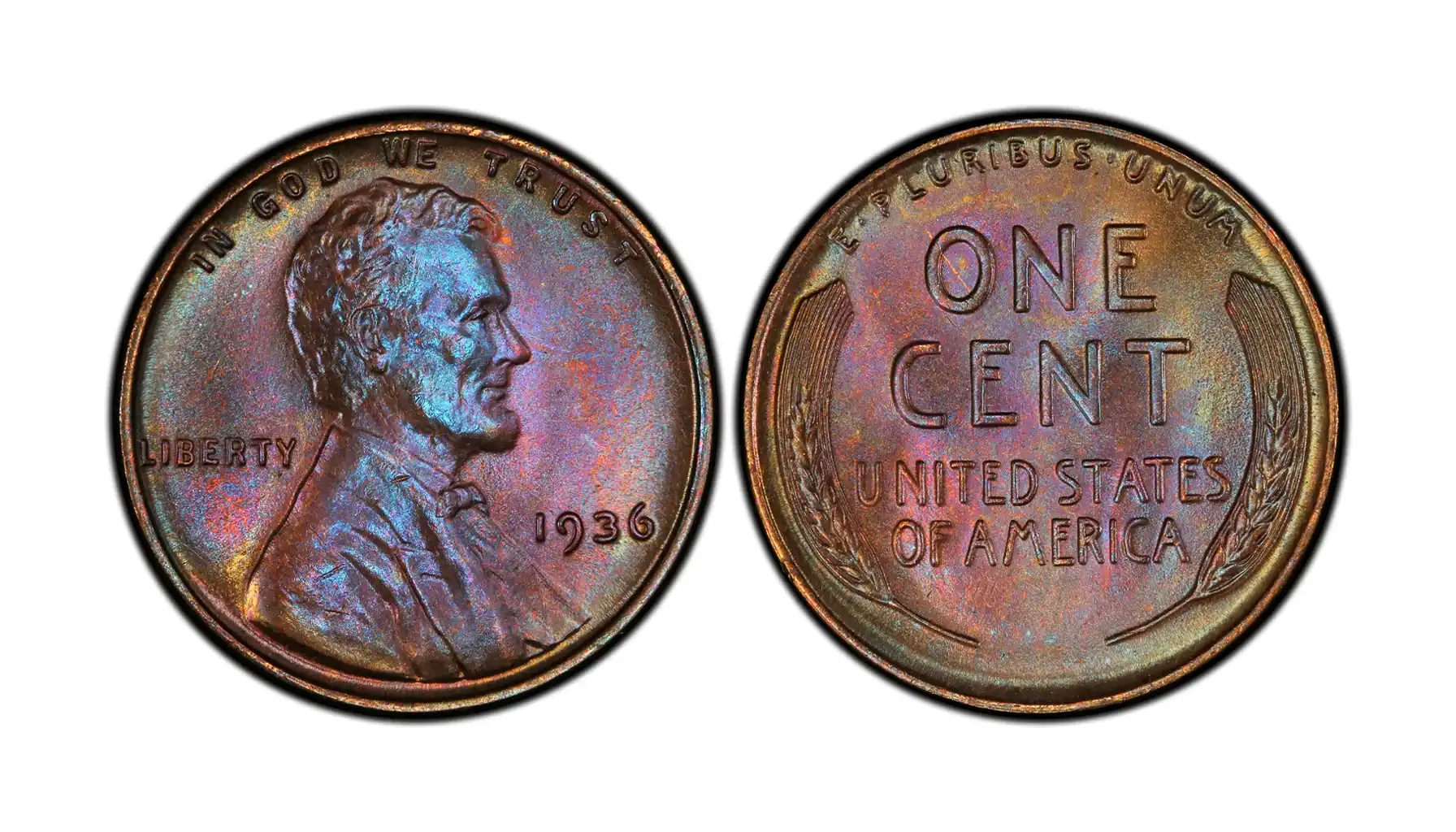
Quick Facts About the 1936 Wheat Penny
Coin Name | 1936 Lincoln Wheat Cent |
Series Start – End | 1909 – 1958 |
Obverse Design | Portrait of Abraham Lincoln |
Obverse Inscriptions | "IN GOD WE TRUST" (above Lincoln's head) "LIBERTY" (left side) Year "1936" (right side) |
Reverse Design | Two wheat stalks flanking the inscriptions |
Reverse Inscriptions | "ONE CENT" (center) "UNITED STATES OF AMERICA" (below) "E PLURIBUS UNUM" (top) |
Designer | Victor David Brenner |
Diameter | 19.05 mm (0.75 inches) |
Thickness | 1.52 mm (0.0598 inches) |
Weight | 3.11 grams (standard for pre-1982 Lincoln cents) |
Edge | Plain (no reeds) |
Composition | 95% Copper, 5% Tin and Zinc |
Designations | BN (brown, less than 5% of the original red luster) RB (red and brown, 5% and 95% of the original red luster) RD (red, 95% or more of the original red luster) Cameo (proofs only, frosted design and mirror-like fields) |
Mint Marks | None for Philadelphia “D” for Denver “S” for San Francisco |
Total Mintage | Over 379 million in total |
1936 Penny Value by Mint
1936 1C
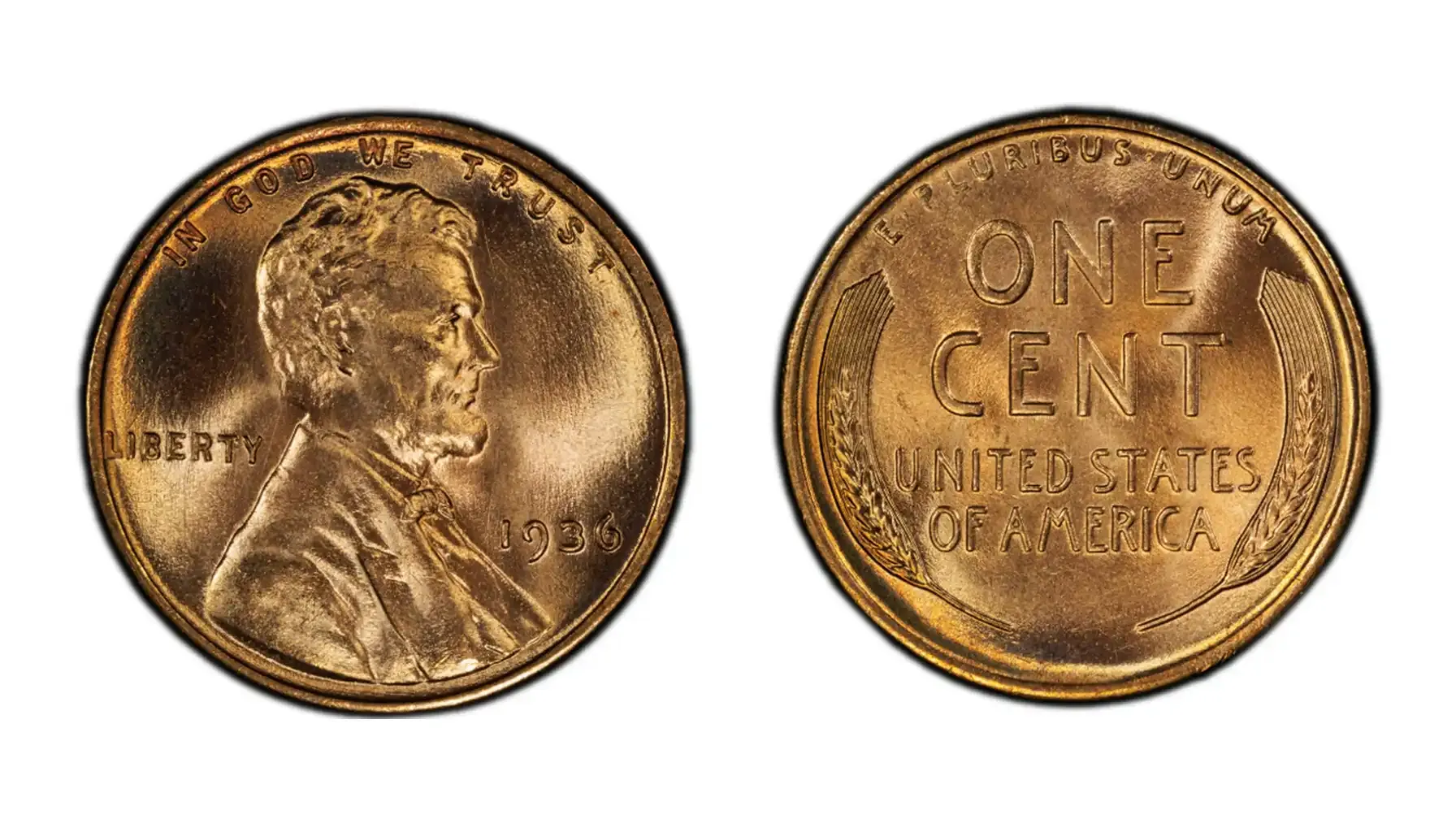
Auction Record: $19,200 for MS68RD
Produced by: Philadelphia Mint
Mintage: 309,632,000
The 1936 1936 Wheat Penny no mint mark is one of the most common issues of the series. Although it was extensively produced by the Philadelphia Mint, it can still fetch impressive prices in near-perfect condition, particularly with a vibrant red (RD) designation. Lower-grade examples are widely available, which is why these represent a reasonable option for numismatists-to-be.
1936-D 1C
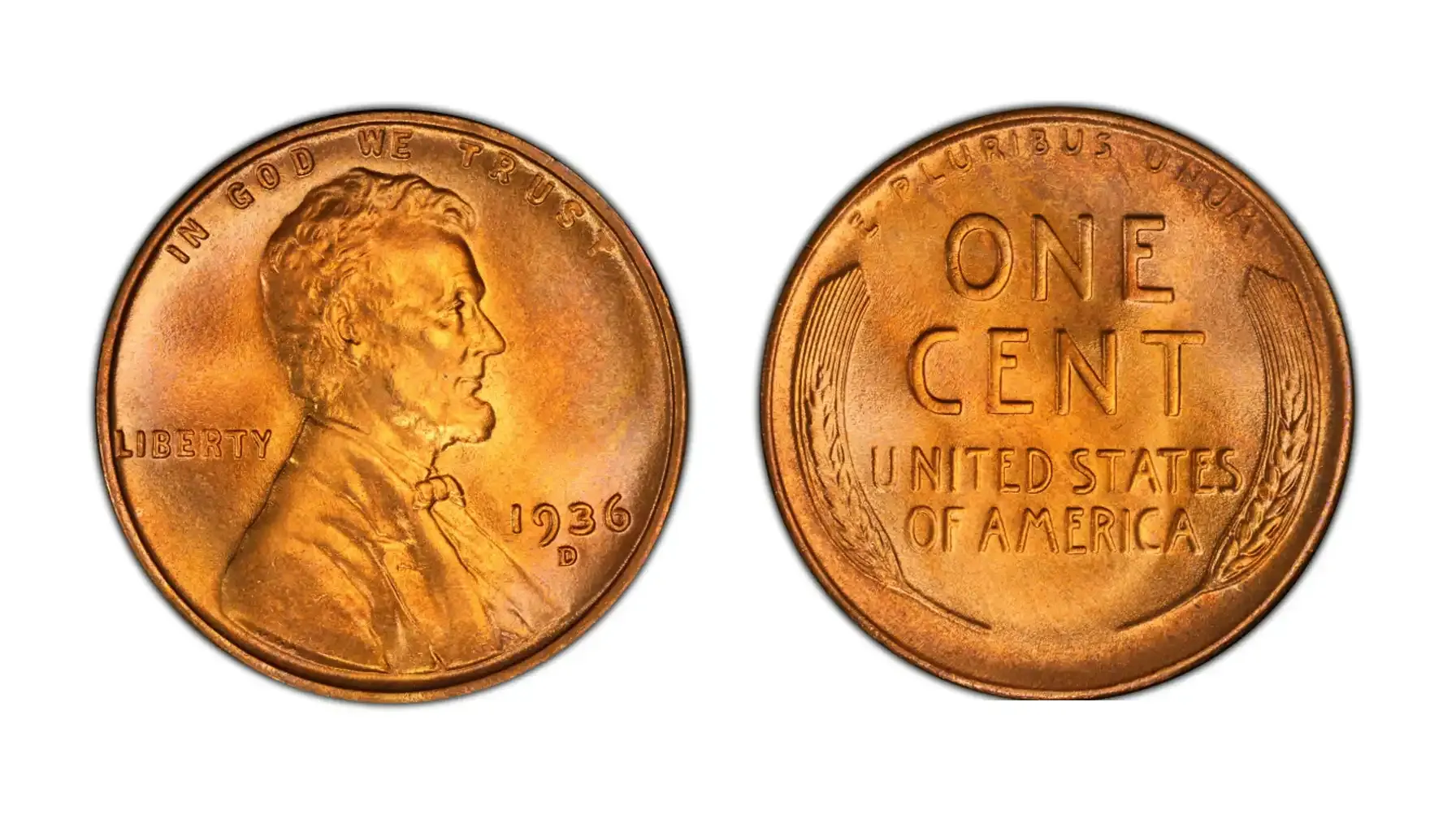
Auction Record: $15,600 for MS68RD
Produced by: Denver Mint
Mintage: 40,620,000
The 1936 D penny is a very common numismatic creation in all grades, including but not limited to MS-67 Red. It is known for generally good strike characteristics and high-grade examples that are widely available, despite their genuinely intensive circulation. However, ultra-high-grade coins with flawless red surfaces remain highly collectible anyway.
1936-S 1C
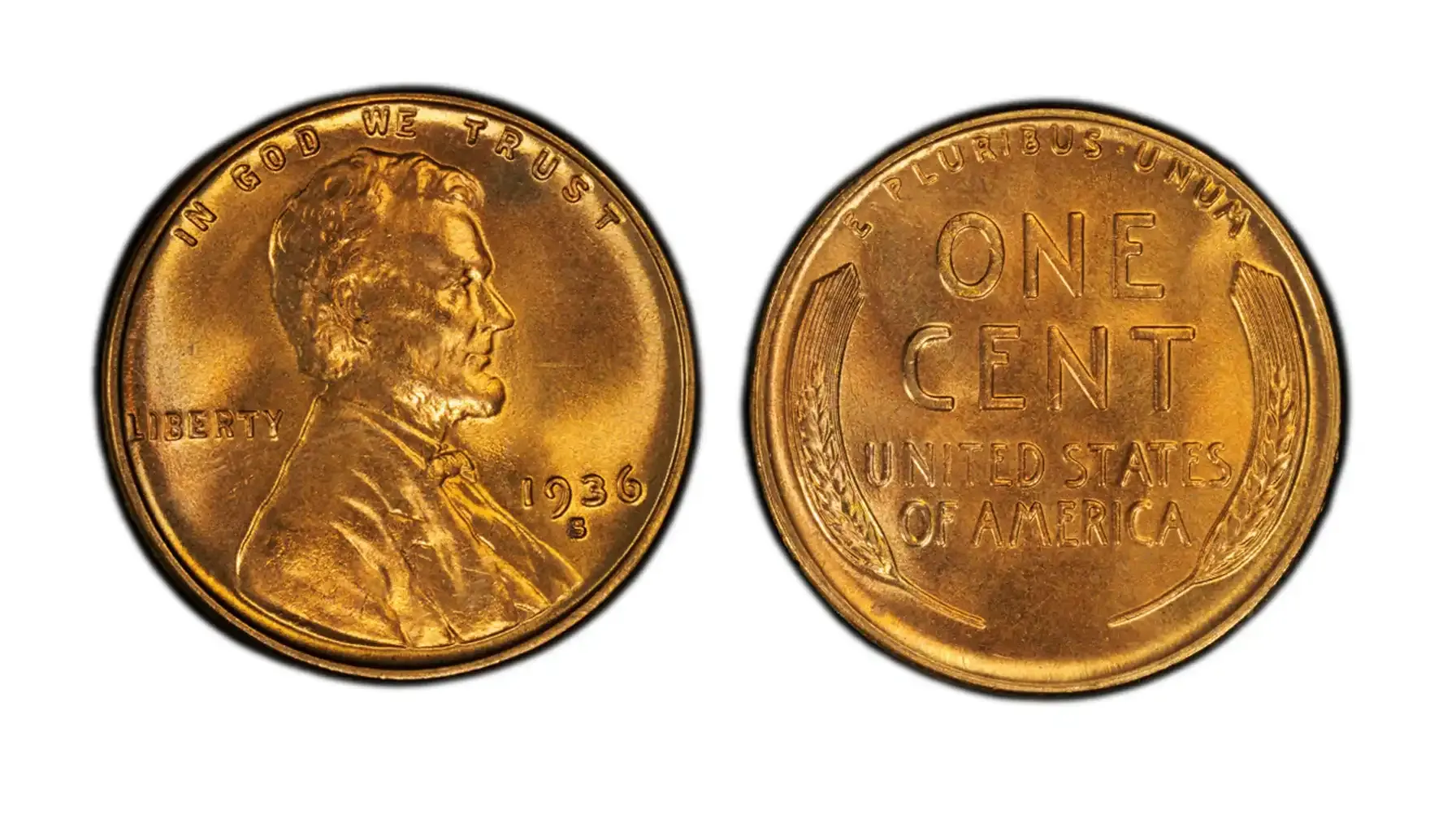
Auction Record: $7,800 for MS67+RD
Produced by: San Francisco Mint
Mintage: 29,130,000
The 1936 S penny is scarcer than its Philadelphia and Denver counterparts, especially in top condition. While circulated examples are still common, high-grade red specimens above MS66 are far more difficult to find, with the 1936 S wheat penny value being relatively low.
1936 1C Satin (Proof)
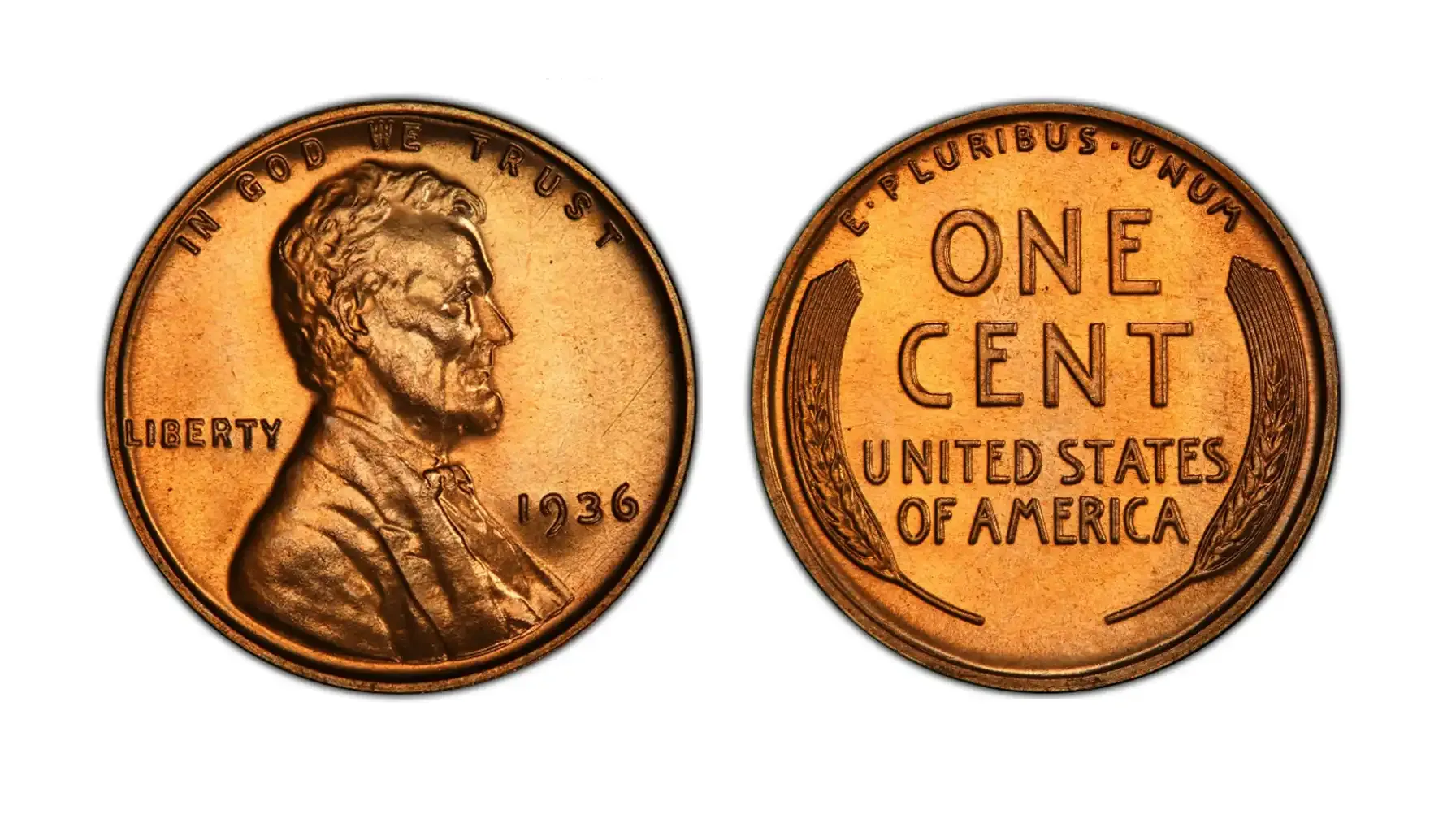
Auction Record: $18,250 for PR66+RD
Produced by: Philadelphia Mint (Proof)
Mintage: 5,569
In 1936, there were struck two proof types, i.e., Type 1 with a satin finish and Type 2 with a brilliant one. As for the satin version, it lacks the reflective brilliance of the Brilliant Finish and has a more matte surface. According to Jaime Hernandez, fewer than 600 examples are believed to survive today.
1936 1C Brilliant (Proof)

Auction Record: $21,150 for PR66
Produced by: Philadelphia Mint (Proof)
Mintage: 5,569
Unlike the previously mentioned variant, the Brilliant Proof features mirror-like surfaces and is highly prized thanks to its more glossy appearance, particularly with cameo designations. It is the rarer of the two proof finishes when found in pristine condition (which is extremely valuable, on top of that).
Rare and Valuable 1936 Penny Errors
Sometimes, people might believe that the most profitable coins are those that bear no imperfections and are literally flawless. The truth is that erroneous numismatic creations are always exclusive, which involuntarily makes them more valuable than other “copies of the copies.”
Although there might appear to be different error types, we shall focus on the most outstanding deviations found via auction platforms and other numismatic channels.
Doubled Die Obverse

Estimated Value: $19,378 (at Bowers & Merena auction)
One of the most famous errors ever known to exist (in general) is the DDO, i.e., doubled die obverse. The 1936 double die penny features noticeable doubling on the date and inscriptions like “LIBERTY” and “IN GOD WE TRUST,” yet the type to which it can be attributed differs (in case it is a proof coin, though).
Missed "AM" on the Reverse
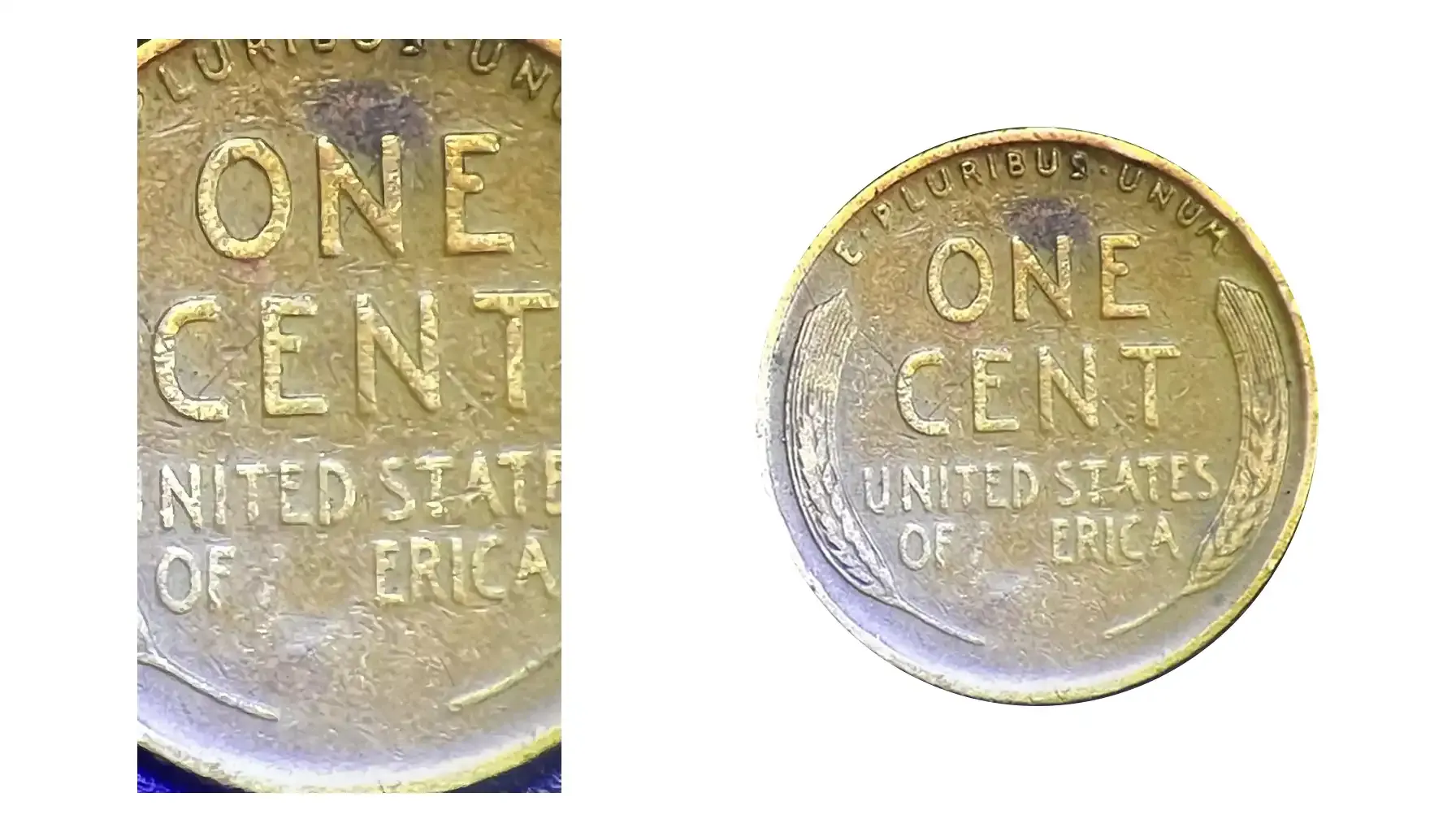
Estimated Value: $2,200
When lettering falls, it is always fun to explore. This striking reverse error shows a missing "A" and "M" in the word "AMERICA," likely due to a filled die. Indeed, it is an unusual and eye-catching minting mistake that creates a pun out of nowhere and draws attention from error specialists.
Detached Lamination Error
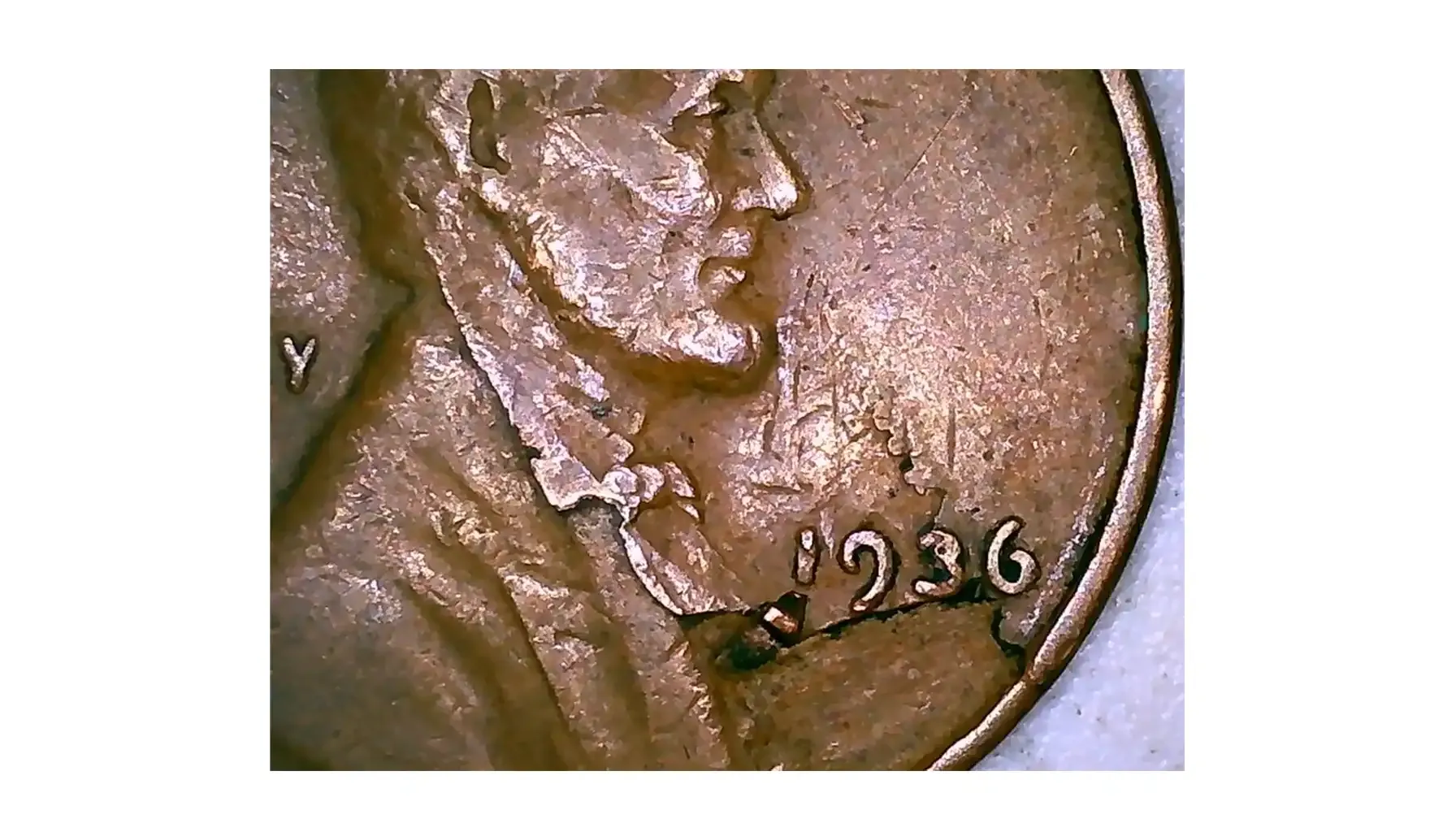
Estimated Value: $500
When a layer of metal peels or flakes off the surface, creating a rough, detached appearance, it is called a detached lamination error. From the perspective of a beginner, it is a fine place to start, for they are common among older coins, with fully detached laminations being more valuable and collectible.
Annealing Clad
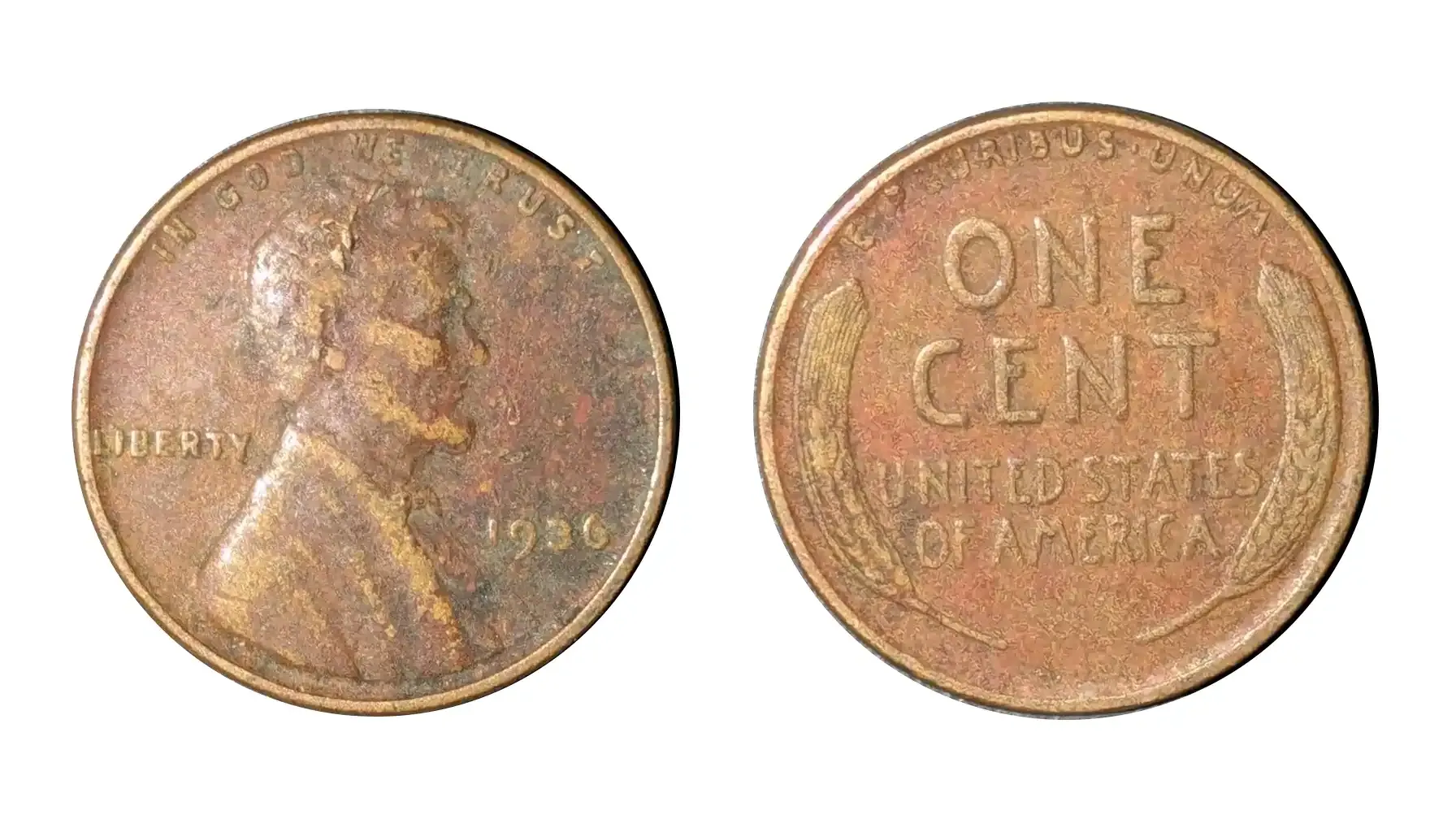
Estimated Value: $350
An annealing error is an abnormal coloring or surface texture caused by improper heat treatment of the planchet before striking. Although they may not give a completely different look to a coin, its value varies, depending on the severity of this deviation.
Mark "L" in Rim
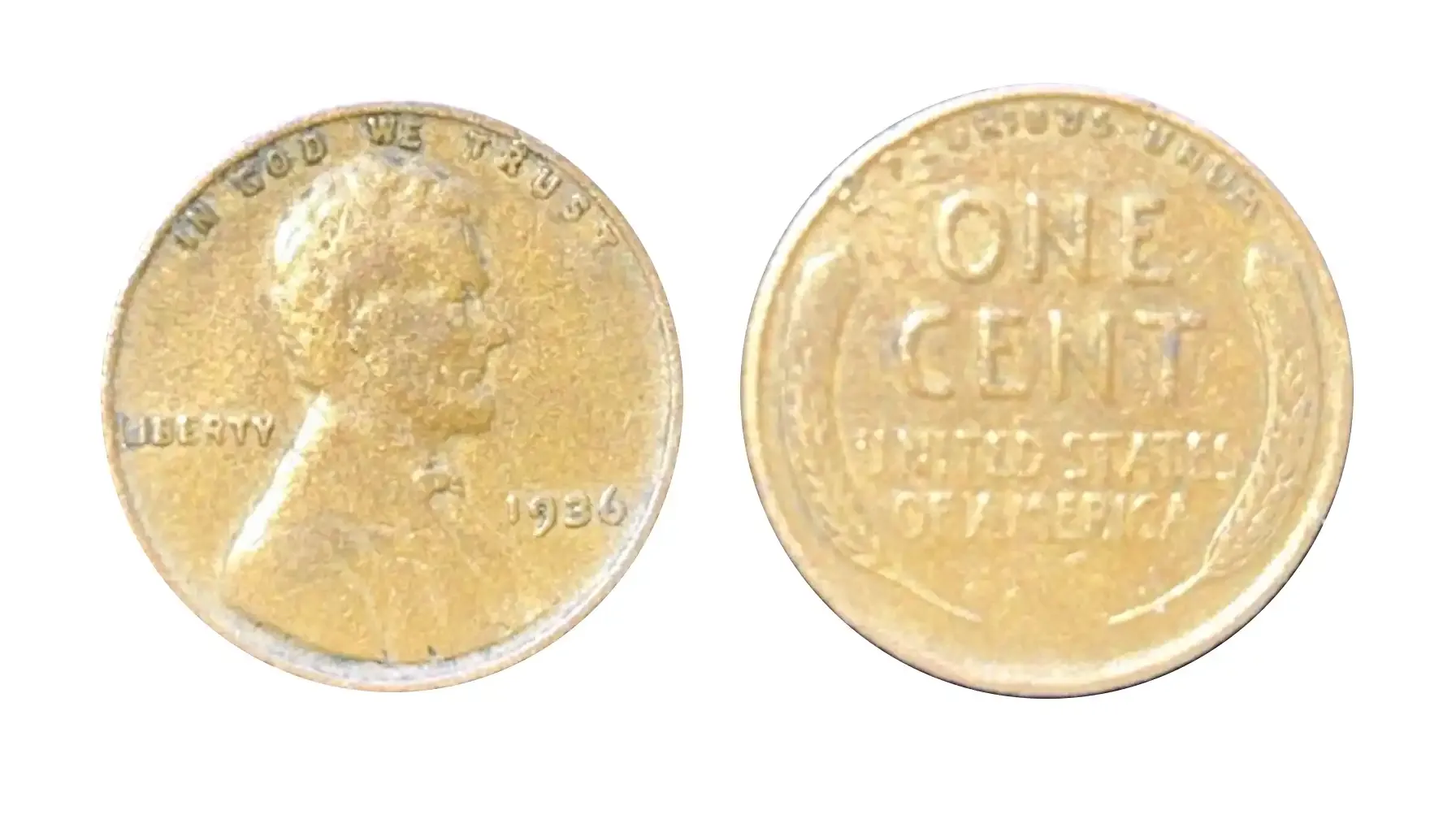
Estimated Value: $200
Here is a minor but intriguing error featuring a visible “L” accidentally impressed into the coin’s rim. As one may suggest, it possibly comes from a dropped letter or a die anomaly, with only a small number of niche collectors interested in this deviation (take it into consideration when planning your collecting path).
General 1936 Wheat Penny Value Ranges by Grade
The value is not a fixed variable, but it fluctuates based on various market constituents. At times, even a common variety may be worth thousands. But why might it happen? Why is a 1936 penny so valuable?
Color Designation: For uncirculated copper coins, color, be it BN, RB, or RD, affects the value (with the latter being the most expensive option).
Mintage: The lower the mintage, i.e., the total number of coins struck, the higher the 1936 wheat penny worth.
Authentication and Certification: Graded coins in slabs from PCGS, ANACS, or NGC grading services tend to be more valuable, as their quality is supported by certificates and commonly accepted documents.
Grade (Condition): According to the international standards, coins are graded on a scale from Poor (P-1) to Mint State (MS-70). Higher grades mean better preservation and a higher value of a 1936 wheat penny.
Grade | 1936 1C RD | 1936 D 1C RD | 1936 S 1C RD |
Good (G-4) | $0.05 – $0.10 | $0.10 – $0.20 | $0.15 – $0.25 |
Fine (F-12) | $0.10 – $0.25 | $0.20 – $0.40 | $0.25 – $0.50 |
Very Fine (VF-20) | $0.25 – $0.50 | $0.50 – $0.75 | $0.50 – $0.80 |
Extremely Fine (EF-40) | $0.50 – $1.00 | $0.75 – $1.25 | $0.80 – $1.50 |
About Uncirculated (AU-50) | $2.00 – $6.00 | $1.50 – $3.00 | $2.00 – $6.00 |
Mint State (MS-60) – BN | $7.00 – $10.00 | $4.00 – $7.00 | $7.00 – $15.00 |
MS-63 – RB | $11.00 – $26.00 | $10.00 – $26.00 | $20.00 – $38.00 |
MS-65 – RD | $30.00 – $260.00 | $42.00 – $300.00 | $60.00 – $900.00 |
MS-67 – RD | $1,650 – $30,000 | $1,000 – $17,500 | $5,750+ |
*So as to grade coins, please refer to reputable grading services like NGC to verify and grade coins with certifications that prove it for good.
A Historical Note: How Did Wheat Pennies Emerge?
The most interesting part lies in the history of wheat pennies. Long years ago, in 1909, the US Mint strived to modernize the coinage system that would represent the artistic potential of the country. Responding to the urgent need for new coins, they released a legendary one-cent piece, designed by a renowned engraver, Victor David Brenner, who introduced a controversial 1909 VDB penny with his own initials on the reverse side.
However, the idea of putting identification marks was perceived with skepticism, for it is a personality that could overshadow his creation on its own. The new iteration, released in 1910, was different, lacking the notorious initials but keeping the rest of the design intact. Further iterations were to be the same, with only slight modifications being introduced from time to time.
Related articles: 1909 Cent Secrets: VDB S, VDB and No Mint Mark Examples
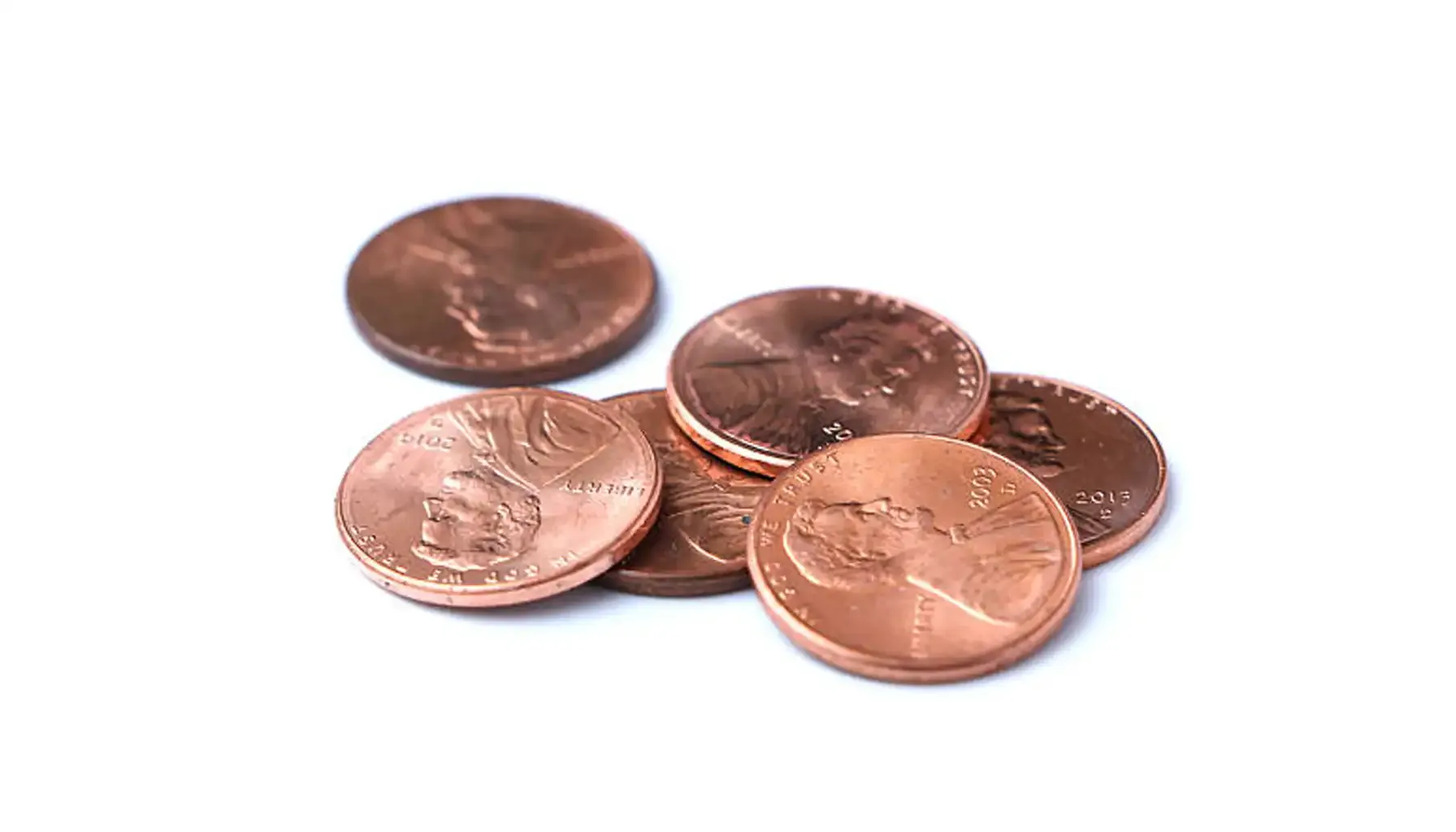
To learn more about the path it took for a coin to enter the numismatic scene on an international level, collectors now have a powerful tool in their pocket – the Coin ID Scanner app. It is an innovative application built specifically for numismatists to identify, evaluate, and manage coin collections in an instant. Besides, it grants immediate access to up-to-date value guides based on condition, mint mark, and market trends. Try now to enrich your experience on the spot!
This coin was minted from 1909 to 1958, surviving two world wars, the Great Depression, and the shifting perspectives of American culture. It simply could not pass by collectors who respect the past.


